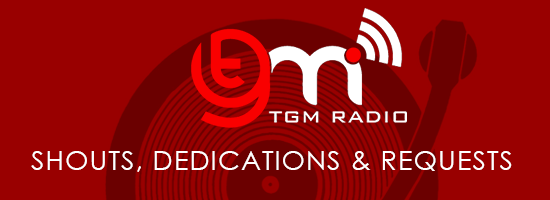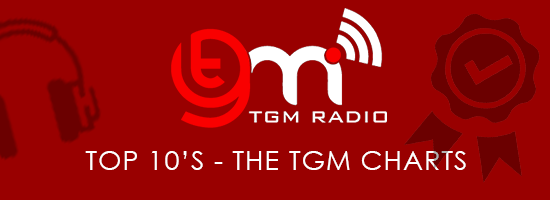NBA Fact or Fiction: The load management problem
February 22nd, 2023Each week during the 2022-23 NBA season, we will take a deeper dive into some of the league’s biggest storylines in an attempt to determine whether the trends are based more in fact or fiction moving forward.
[Last time on Fact or Fiction: The unbreakability of LeBron James’ career scoring record]
Load management was a hot topic in Salt Lake City for the 2023 NBA All-Star Game, and player responses to the subject covered a wide range. Dallas Mavericks guard Kyrie Irving dismissed it as a “narrative” that has “completely run amok” and “dehumanized some of us,” while Minnesota Timberwolves guard Anthony Edwards described player rest as “the only thing I probably don’t like” about the current state of the league.
“Just play, man,” said Edwards, one of two All-Stars who has not missed a game this year. “If you’re 80%, you gotta play. I don’t like all the sitting, missing games stuff. These people might have enough money to come to one game, and that might be the game they come to, and you’re sitting out. I take pride in trying to play every game, because there might be one fan that has never seen me play, and I’m trying to play.”
Most players fell somewhere in between Irving and Edwards, both acknowledging that their absences can disappoint fans and recognizing that injury management’s ultimate goal is prioritizing health for the playoffs. One thing players agreed upon: They will not entertain fewer games if a shortened season means a pay cut.
“I think 82 is perfect,” said Milwaukee Bucks superstar Giannis Antetokounmpo.
NBA commissioner Adam Silver spoke extemporaneously on what is “an ongoing conversation with the players’ association,” and it is clear he understands it from the perspective of both players and fans.
“These are human beings who are often playing through enormous pain, who play through all kinds of aches and pains on a regular basis,” Silver said in his annual news conference on the eve of the All-Star Game. “The suggestion that these men should just be out there more for its own sake, I don’t buy into. …
“Then, there’s the fan aspect of saying, ‘If players are not going to be able to participate in a certain amount of games, what should the response be from the league and how should you be presenting your product?'”
The difficulty comes with balancing real concerns from players who feel overtaxed by the demands of a season and from fans who are paying for a product they increasingly believe falls short of expectations. The subject presents plenty of obstacles, Silver said. The league has partnered with doctors and data scientists in its attempt to optimize player performance, but “it may be that there’s a fair degree of randomness in terms of when players get injured.” The NBA is weighing the merits of elongating the season to further reduce back-to-back games, and “if we thought it made sense to reduce the number of games, we would.”
Except, “We think we can do a better job, but we don’t have a specific solution yet,” is not good enough. Neither is, “We may need to reset in a certain way in terms of expectations,” or, “I don’t have a good answer for that other than this is a deep league with incredible competition.” A good answer lies in this from the commissioner: “Our stars are not missing that many games for resting. We have injuries. I think we would all agree that’s a separate issue, but as a measure of single games missed, it’s not that bad.”
For the most part, this is true. The 27 players named to this year’s All-Star Game, including three injury replacements, have combined for 68 one-game absences this season, or an average of 2.5 per player. That is not a lot. It also means that one in every 13 times a fan buys a ticket, he or she misses a main attraction. Divide what Silver calls an “all-time record for tickets sold” by 13, and that is more than 1 million customers who are paying for a diminished product. If on average a family of four pays $288 for the cheapest seats, four hot dogs, four drinks and parking, that is at minimum $72 million paid for a service not rendered, not to mention the many viewers at home who are not watching what they expected 16% of the time. That is a lot.
One-game absences are not an exact science. Each one is not scheduled rest, although many are labeled “injury management,” some sort of “soreness” or the equally vague “non-Covid illness.” Since 82.4% of the 68 one-game absences either fall on a back-to-back or result in four or more days between games played, it is safe to say that teams are scheduling the majority of one-game absences with advanced notice. The frequency with which stars miss games in Utah, Charlotte and Toronto reinforces the idea of planned rest.
Here is the data I compiled for one- and two-game absences (1GA and 2GA), the number of them that either fall on one end of a back-to-back (B2B) or factor in an extended rest period (XR), and how many of those games come on the road, where fans have either one or two chances to see a visiting star player:
|
LOAD MGMT |
TOTAL |
B2B |
XR |
B2B + XR |
ROAD |
|
1GA |
68 |
40 (59.4%) |
16 (23.2%) |
56 (82.4%) |
47 (69.1%) |
|
2GA |
16 |
8 (50%) |
6 (37.5%) |
14 (87.5%) |
17 (53.1%) |
The concept of scheduled rest is not new. ESPN’s Baxter Holmes explored it in depth in 2016, when Brad Stevens, then the Boston Celtics‘ coach and now their top basketball executive, said, “When the schedule comes out, for me, I go through the whole thing that day and plan the whole year and think about it.”
It is no secret that NBA teams plot scheduled rest days for players before the start of training camp. This information should be made public prior to (and regularly throughout) the season. The value to fans, not to mention the league’s betting partners, outweighs any perceived competitive disadvantage. It may even lead teams to coordinate rest days among opposing stars, further limiting the amount of unexpected absences.
Teams should lower ticket prices for these scheduled rest days, both creating opportunities for fans who might not be able to afford a full-priced game and encouraging others to still attend despite less star-power.
This would not solve the problem entirely, but if all it does is eliminate 80% of the surprise one-game absences of star players (and potentially some two-game absences), it is a great service to their fans.
The league can pay a similar service to its television viewers. At least one recent All-Star has missed 76 of the 117 games (64.9%) televised nationally on ABC, ESPN or TNT this season, including three-quarters of the games since the calendar turned to 2023 and 12 of the final 13 such games entering the All-Star break. As many as 17 of those 76 games (22.4%) could be flagged for falling under the purview of scheduled rest.
That still leaves a significant percentage of national TV games absent injured players. While the NBA can (and should) maintain that fans attending those games assume that risk, there are countless televised no-shows that could be avoided if the NBA had more flexibility to adjust its schedule and did a better job of it.
On Dec. 29, the league and ESPN flexed its schedule into a game between the Phoenix Suns and Denver Nuggets on Jan. 11, knowing Devin Booker had a preexisting injury that would keep him out of the game. When Chris Paul and Deandre Ayton also suffered injuries in the days leading up to the game, rendering it unwatchable (the Nuggets won by 29), the NBA did not leverage an opportunity to showcase instead the originally scheduled healthy rosters in Sacramento and Houston that rarely get national TV opportunities.
Two more concerns were reinforced the night before, when Booker, Paul or Ayton missed another national TV appearance. Why is the NBA televising either end of a back-to-back, let alone both, since it is more likely stars will rest in one or both of those games? And by packing televised games of the same teams into a short period of time, the league is increasing the likelihood an injury will cost a star multiple broadcasts. Five of the Los Angeles Lakers‘ 16 games from Christmas until Jan. 24 were on the national TV schedule, and Anthony Davis missed all of them (one of which was also a scheduled rest day for LeBron James).
Making all of these minor adjustments — publicizing scheduled rest days, eliminating back-to-backs from national broadcasts, spacing out the frequency of reoccurring teams on television and increasing flexibility for TV schedule adjustments — will not eliminate load management, but it eases the burden on fans at little cost to players. That is the goal here. Nobody expects players to place themselves at a heightened risk. They just don’t want one product when they paid for another, or when an alternative is available at no cost.
Determination: Fact. The NBA can better manage the absences of its star players in arenas and on TV.
Disclaimer/Note: TGM Radio’s latest news posts are a collection of curated and aggregated, fresh content from the best news sources across the globe.
Tags: sports





